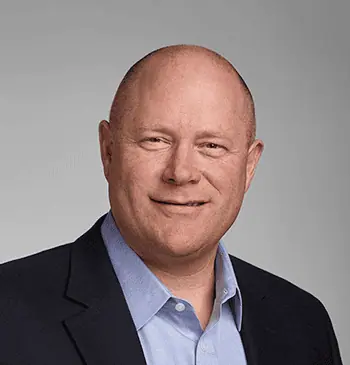Don Slagle is the director of Agri-Access.

How to Optimize Secondary Market Partnerships
Secondary market partnerships can help banks reduce risk and gain industry knowledge.
Brought to you by Agri-Access

Many bankers are experiencing real-time challenges creating long-term strategy shifts in how they approach agricultural lending.
Navigating the complexities of the macroeconomic environment alone can lead banks to miss opportunities; coordinating with a partner, especially one that serves as an industry knowledge center, can enable more confident decision-making and optimized performance, despite these evolving challenges.
Real-time Challenges
Various tension points influence the way banks view and approach credit and liquidity risk, including post-pandemic portfolio issues, particularly for those with a high concentration of commercial real estate loans, given the rise of interest rates.
Other tension points vary by vertical industry. For instance, in the agriculture market, rising production costs, rapid farm consolidation and tech-driven growth are pushing ag practices forward while simultaneously demanding a shift in how bankers support their clients’ needs.
These shifts coincide with changing customer expectations. According to McKinsey & Co. research, bank customers want to migrate to digital services, have their banks proactively solve issues and to be offered more self-serve options. Customers who are satisfied with their banks are six times more likely to remain with the bank and likely to purchase more of the bank’s products.
These challenges and changes don’t exist in a vacuum — they have implications for banks and their customers that require immediate action and a more modern, long-term vision that can support continuous evolution.
While bankers know that the financial needs of their borrowers continue to evolve, they don’t always know how or what to focus on first. The right partner can make all the difference as they start to shift their thinking and enhance their offerings to support their current and future customers more effectively.
Secondary Market Allies
Secondary partners are there to share best practices, not just capital. Typically coordinating behind the scenes, the right partner provides an alternative channel for banks to offload loans — and the loan’s credit and liquidity risk — while keeping the banker-customer relationship intact.
These partners also serve as a knowledge center for their lender clients; experts within secondary market organizations often have decades of experience across various industries and with banks of all sizes. They prioritize staying informed and helping clients stay ahead of industry shifts, such as the latest marketing and technology strategies and trends and any upcoming regulatory and compliance changes.
Lenders can utilize secondary market partners, who have proven insights at their fingertips, to answer their most pressing questions, regarding:
- Risk Management: How are other banks approaching portfolio diversification? How are they spreading risk across different assets or geographic regions? What strategies are successful in mitigating portfolio concentration risk?
- Regulatory and Compliance: What regulatory requirements are in the pipeline? Are there any updates to compliance guidelines they need to be aware of? What tools can they use to document and report regulatory and compliance workflows and data properly?
- Tools and Technologies: Do any technology solutions that automate processes and enhance data analytics have a proven return on investment? What infrastructure changes are other banks making to safeguard data and protect against cyber threats? Are there specific digital platforms that allow us to serve our customers’ needs more quickly?
Secondary market partners allow lenders to stay ahead of emerging market trends and better understand evolving portfolio management strategies that enhance their capabilities, products and services. And though not every best practice will work for every bank, utilizing a partner ecosystem to understand and consider all options as banks navigate changes in how they work allows them to stay one step ahead.


